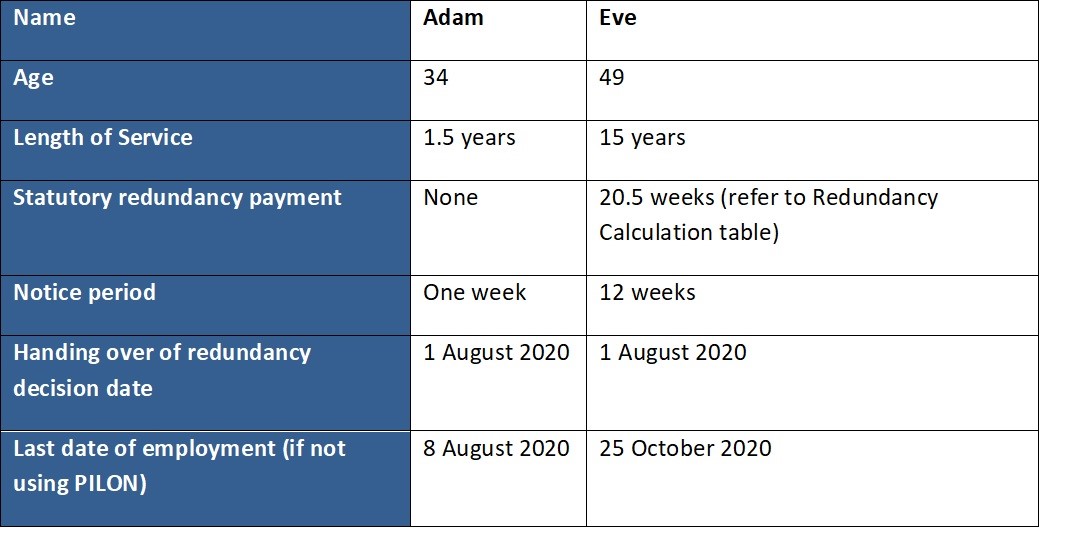What Happens to Redundancy If Company Goes Bust? A Guide to Your Rights
What Happens to Redundancy If Company Goes Bust? A Guide to Your Rights
Blog Article
Checking Out the Operational Characteristics of Company Redundancy and Its Long-Term Sustainability

Redundancy Techniques for Organization Connection
In order to guarantee undisturbed operations, organizations need to apply reliable redundancy techniques for organization connection. Redundancy in this context describes the replication of vital parts or features within a system to minimize the influence of prospective failings. By integrating redundancy strategies, companies can enhance their strength against disturbances triggered by various factors such as all-natural disasters, tools failures, or cyber-attacks.
One common redundancy technique is the execution of backup systems and data storage space services. This entails creating duplicates of crucial information and systems that can be turned on in instance of a primary system failing. Additionally, organizations can develop repetitive communication channels and source of power to maintain connectivity and operations throughout unforeseen events.
Moreover, cross-training employees to execute several roles within the company can serve as a beneficial redundancy strategy. If essential workers are not available due to health problem or various other factors, this makes certain that necessary jobs can still be brought out even. On the whole, reliable redundancy techniques are essential for organizations to maintain functional connection and minimize the impact of possible disturbances.
Influence of Redundancy on Organizational Durability
Given the important function redundancy approaches play in guaranteeing service continuity, checking out the impact of redundancy on organizational strength becomes vital for comprehending the all natural functional dynamics of a firm. Redundancy, when tactically executed, can dramatically add to enhancing an organization's resilience in the face of unforeseen difficulties.
Furthermore, redundancy can bolster worker morale and confidence, recognizing that there are contingency strategies in position to attend to unpredicted scenarios. This complacency can result in raised performance and a more favorable workplace. Furthermore, redundancy can cultivate development and imagination within an organization as staff members really feel empowered to take calculated risks, recognizing that there is a safeguard to support them in instance of failing. In general, the influence of redundancy on business resilience is profound, shaping the long-lasting sustainability and success of a business.
Balancing Effectiveness and Adaptability in Redundancy
Accomplishing an unified balance between operational performance and flexible flexibility is a pivotal challenge in the tactical implementation of redundancy within organizations. Effective procedures are essential for maintaining performance and cost-effectiveness, ensuring that sources are utilized efficiently. Nevertheless, extreme emphasis on effectiveness alone can cause rigidness, making it tough for companies to adjust to unexpected changes or obstacles. On the other hand, flexibility allows companies to respond nimbly to evolving situations, fostering development and strength. Yet, also much versatility without a solid operational foundation can lead to inadequacies and disparity.
To stabilize performance and flexibility in redundancy planning, organizations must thoroughly assess their functional needs, market dynamics, and calculated objectives. Executing lean practices can enhance effectiveness by simplifying processes and getting rid of waste, while fostering a culture of adaptability and continuous renovation can increase versatility. In addition, investing in cross-training programs and durable interaction networks can help click here for more info grow a functional labor force find more information capable of managing diverse tasks during periods of shift. Eventually, finding the right equilibrium between efficiency and flexibility is important for building a durable and sustainable organization when faced with unpredictability.
Long-Term Sustainability Through Redundancy Planning
To ensure enduring stability and security, organizations must purposefully straighten their redundancy planning with long-lasting sustainability goals, therefore integrating operational effectiveness with flexible versatility. Companies need to view redundancy not as a responsive service to prompt issues but as an aggressive approach for lasting success.

Proactive Measures for Lasting Company Workflow
How can companies proactively improve their functional sustainability for long-term success? Implementing positive steps is important for business intending to make certain sustainable operations.
Additionally, cultivating a society of continuous renovation and discovering within the organization can improve versatility to altering market conditions and client demands. Urging employee participation in decision-making procedures and supplying opportunities for expert growth can boost spirits, productivity, and general efficiency. Establishing clear objectives, monitoring crucial performance indications, and regularly examining progression are important elements of positive sustainability monitoring.
Working together with providers, customers, and other stakeholders to advertise lasting techniques throughout the supply chain can create a causal sequence of positive effect - redundancy pay if company goes bust. By taking positive steps in the direction of operational sustainability, helpful resources firms can construct strength, drive development, and secure their long-term success in an ever-evolving company landscape
Final Thought

In the realm of organizational management, the tactical release of business redundancy stands as a crucial yet detailed method that necessitates a delicate equilibrium between operational efficiency and lasting viability. By exploring the operational dynamics that underpin firm redundancy and evaluating its wider ramifications for organizational strength and flexibility, a nuanced understanding of how redundancy methods can form the future trajectory of a company begins to unravel.Provided the essential duty redundancy strategies play in guaranteeing organization connection, exploring the effect of redundancy on organizational strength ends up being imperative for comprehending the all natural functional characteristics of a firm. On the whole, the effect of redundancy on business strength is profound, forming the long-term sustainability and success of a firm.
In final thought, comprehending the operational characteristics of business redundancy is critical for guaranteeing long-term sustainability.
Report this page